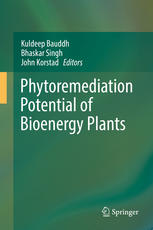

Most ebook files are in PDF format, so you can easily read them using various software such as Foxit Reader or directly on the Google Chrome browser.
Some ebook files are released by publishers in other formats such as .awz, .mobi, .epub, .fb2, etc. You may need to install specific software to read these formats on mobile/PC, such as Calibre.
Please read the tutorial at this link: https://ebookbell.com/faq
We offer FREE conversion to the popular formats you request; however, this may take some time. Therefore, right after payment, please email us, and we will try to provide the service as quickly as possible.
For some exceptional file formats or broken links (if any), please refrain from opening any disputes. Instead, email us first, and we will try to assist within a maximum of 6 hours.
EbookBell Team

4.3
58 reviewsThe globally escalating population necessitates production of more goods and services to fulfil the expanding demands of human beings which resulted in urbanization and industrialization. Uncontrolled industrialization caused two major problems – energy crisis and accelerated environmental pollution throughout the world.
Presently, there are technologies which have been proposed or shown to tackle both the problems. Researchers continue to seek more cost effective and environmentally beneficial pathways for problem solving.
Plant kingdom comprises of species which have the potential to resolve the couple problem of pollution and energy.
Plants are considered as a potential feedstock for development of renewable energy through biofuels. Another important aspect of plants is their capacity to sequester carbon dioxide and absorb, degrade, and stabilize environmental pollutants such as heavy metals, poly-aromatic hydrocarbons, poly-aromatic biphenyls, radioactive materials, and other chemicals.
Thus, plants may be used to provide renewable energy generation and pollution mitigation.
An approach that could amalgamate the two aspects can be achieved through phytoremediation (using plants to clean up polluted soil and water), and subsequent generation of energy from the phyto-remediator plants. This would be a major advance in achieving sustainability that focuses on optimizing ‘people’ (social issues), ‘planet’ (environmental issues), and ‘profit’ (financial issues).
This book addresses the overall potential of major plants that have the potential to fulfil the dual purposes of phytoremediation and energy generation. The non-edible bioenergy plants that are explored for this dual objective include Jatropha curcas, Ricinus communis,Leucaena leucocephalla, Milletia pinnata, Canabis sativa,Azadirachta indica, and Acacia nilotica.
The book addresses all possible aspects of phyto-remediaton and energy generation in a holistic way. The contributors are one of most authoritative experts in the field and have covered and compiled the best content most comprehensively. The book is going to be extremely useful for researchers in the area, research students, academicians and also for policy makers for an inclusive understanding and assessment of potential in plant kingdom to solve the dual problem of energy and pollution.